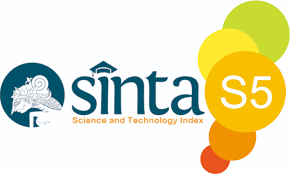Analisis Perbandingan Teknik Rendering Menggunakan Adobe Media Encoder Dan Software Adobe Premiere
Abstract
Abstract This study discusses the comparative analysis of rendering techniques using adobe media encoder and adobe premiere pro software with the aim of knowing the results of the rendering time of adobe media encoder cc 2018 and adobe premiere pro cc 2018 on cinematic video rendering and also knowing the level of video feasibility produced by adobe media encoder cc 2018 and adobe premiere pro cc 2018 on cinematic videos. In the research of Comparative Analysis of Rendering Techniques Using Adobe Media Encoder and Adobe Premiere Software, the author uses research and development research methods. Then for the methodology for the cinematic video "Palak Siring Kemumu Waterfall Tourism Object in Argamakmur" using the Luther-Sutopo Multimedia Development Life Cycle (MDLC) methodology, a comparative analysis of rendering techniques using adobe media encoder and adobe premiere pro software will result in testing. Rendering speed, the size of the rendered file and the video quality of the rendering. The results of this study are able to state that the rendering speed using adobe premiere pro is faster than using adobe media encoder.
Keywords: Adobe media endoder, Adobe premiere pro, Rendering
Downloads
Copyright (c) 2022 Ali Sutan Pane; Agung kharisma Hidayah

This work is licensed under a Creative Commons Attribution-ShareAlike 4.0 International License.
An author who publishes in Jurnal Media Infotama agrees to the following terms:The author holds the copyright and grants the journal the right of first publication of the work simultaneously licensed under the Creative Commons Attribution-Share Alike 4.0 License which allows others to share the work with acknowledgment of the work's authorship and initial publication in this journal.Submission of a manuscript implies that the submitted work has not been previously published (except as part of a thesis or report, or abstract); that it is not being considered for publication elsewhere; that its publication has been approved by all co-authors. If and when a manuscript is accepted for publication, the author retains the copyright and retains the publishing rights without limitation.
For new inventions, authors are advised to administer the patent before publication. The license type is CC-BY-SA 4.0.
MEDIA INFORMATION REVIEW: Journal of the Faculty of Computer Science is licensed under a Creative Commons Attribution-ShareAlike 4.0 International License.You are free to:Share
— copy and redistribute material in any medium or formatAdapt
— remix, modify and develop materialfor any purpose, even commercial.
The licensor cannot revoke this freedom as long as you follow the license terms












.png)


